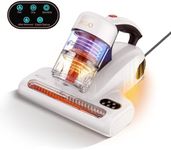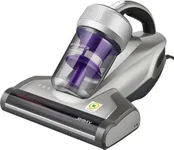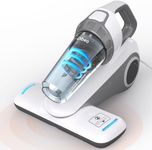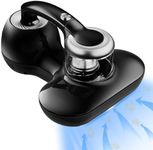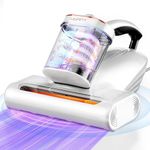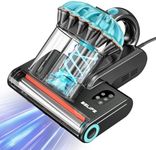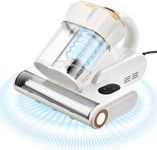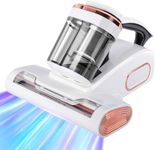Buying Guide for the Best Vacuum Cleaner For Mattress
Choosing a vacuum cleaner for your mattress is a smart way to keep your sleeping area clean and free from dust mites, allergens, and other debris. Mattresses can trap a lot of particles that regular cleaning might miss, so a specialized vacuum can make a big difference in your comfort and health. When picking the right vacuum for this purpose, it's important to focus on features that help you clean deeply and efficiently without damaging your mattress. Understanding the key specifications will help you find a model that matches your needs and makes the cleaning process easy and effective.Suction PowerSuction power refers to how strongly the vacuum can pull in dust, dirt, and allergens from your mattress. This is important because mattresses are thick and can hold particles deep inside. Suction power is often measured in watts or air watts, but sometimes just described as 'high' or 'low.' For mattress cleaning, moderate to high suction is usually best, as it can remove more debris without being so strong that it damages the fabric. If you have allergies or pets, higher suction can be helpful, but for delicate mattresses, a gentler setting might be better. Think about your mattress type and your sensitivity to dust when deciding how much suction you need.
Filtration SystemThe filtration system in a vacuum cleaner determines how well it traps tiny particles like dust mites and allergens, instead of releasing them back into the air. HEPA filters are the gold standard, capturing very small particles and making the air cleaner. Some vacuums have basic filters that are fine for general cleaning, while others have advanced multi-stage or HEPA filters for allergy sufferers. If you or your family have allergies or asthma, look for a vacuum with a HEPA or similar high-efficiency filter. If allergies are not a concern, a standard filter may be sufficient.
UV SterilizationSome mattress vacuums come with a UV sterilization feature, which uses ultraviolet light to kill bacteria, dust mites, and other microorganisms. This can be especially useful for people who are sensitive to allergens or want an extra level of cleanliness. Not all vacuums have this, and it's not always necessary for everyone. If you want to reduce germs and allergens as much as possible, consider a model with UV sterilization. If you are mainly concerned with dust and dirt, this feature may not be essential.
Weight and PortabilityWeight and portability refer to how easy the vacuum is to handle and move around, especially on a mattress. Lighter vacuums are easier to use for longer periods and can be more comfortable if you need to clean regularly. Some vacuums are handheld and very light, while others are bulkier. If you have limited strength or want something easy to use, look for a lightweight, compact model. If you don't mind a bit more weight for extra features, a heavier vacuum might be suitable.
Noise LevelNoise level is how loud the vacuum is when in use. Some vacuums can be quite noisy, which might be bothersome if you live in an apartment or want to clean without disturbing others. Noise is usually measured in decibels (dB), with lower numbers being quieter. If you are sensitive to noise or plan to use the vacuum when others are around, look for a quieter model. If noise is not a concern, this may not be a deciding factor for you.
Ease of Cleaning and MaintenanceThis refers to how simple it is to empty the dust container, clean the filters, and keep the vacuum in good working order. Some vacuums have washable filters and easy-to-empty dust bins, while others require more effort. If you want a hassle-free experience, look for a vacuum with straightforward maintenance. If you don't mind a bit of extra work, you might prioritize other features instead.
